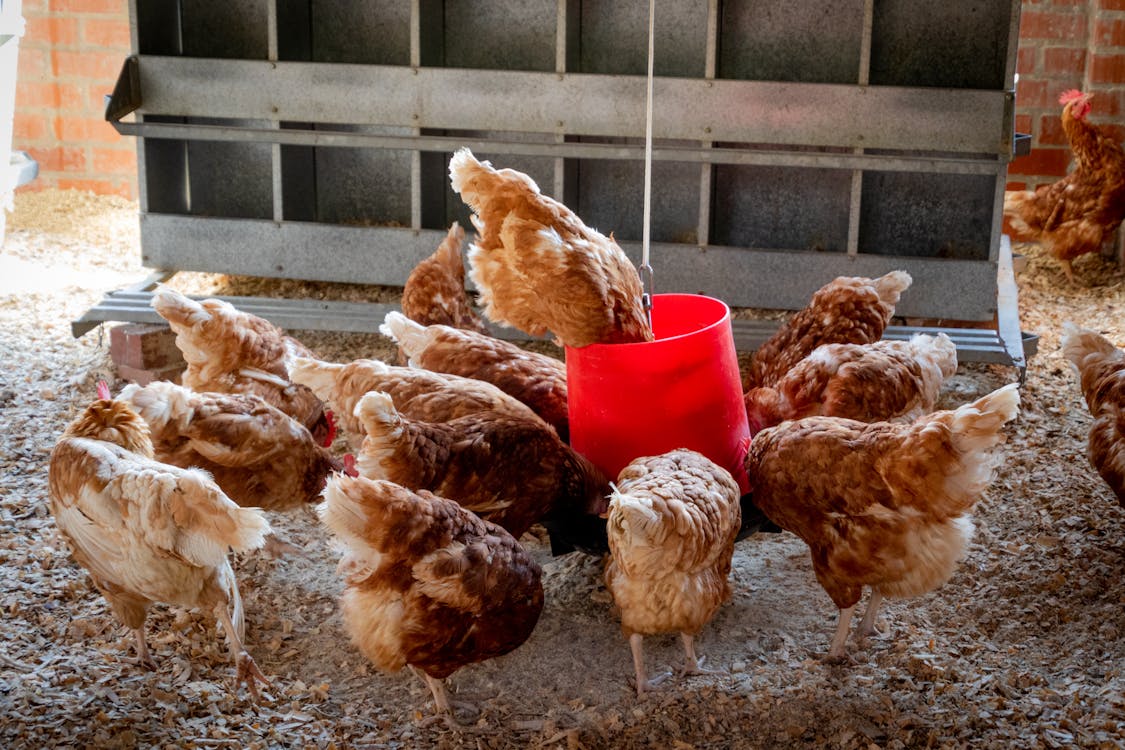Search
Featured post
How to Prevent the Negative Effect of Feed Change in Poultry
How to Prevent the Negative Effect of Feed Change in Poultry
Poultry farming is a delicate and intricate business that requires careful attention to detail in order to ensure the health and well-being of the birds. One of the key factors that can have a significant impact on the health of poultry is the type of feed that they are given. Abrupt changes in feed type can lead to gastrointestinal problems in chickens, which can have serious consequences if not addressed promptly.
Automatic Chicken Feeder
DoubleWood Feeder & Waterer Combo
The effects of abrupt changes in feed can manifest in a variety of ways, including diarrhea, decreased egg production, weight loss, and even death in severe cases. These gastrointestinal problems can be caused by a number of factors, such as changes in the nutritional content of the feed, the presence of toxins or contaminants, or simply the fact that the birds' digestive systems are not able to adjust to the new feed quickly enough.
In order to avoid these issues, it is crucial to transition poultry slowly from one feed type to another. This gradual transition allows the birds' digestive systems to adapt to the new feed gradually, reducing the risk of gastrointestinal problems. There are several steps that can be taken to ensure a smooth transition from one feed type to another:
1. Start by mixing small amounts of the new feed with the old feed, gradually increasing the proportion of the new feed over a period of several days or weeks.
2. Monitor the birds closely during the transition period, paying attention to their behavior, appetite, and droppings. Any signs of digestive upset should be addressed immediately.
3. Provide plenty of fresh water at all times, as dehydration can exacerbate gastrointestinal problems.
4. Consider adding probiotics or digestive enzymes to the birds' diet during the transition period to help support their digestive health.
5. Consult with a veterinarian for guidance on the best way to transition your birds to a new feed type, taking into account their specific nutritional needs and any health conditions they may have.
A Guide for Big or Small Poultry Keepers, Beginners and Farmers
By taking these steps to transition poultry slowly from one feed type to another, farmers can help to minimize the risk of gastrointestinal problems and ensure the health and well-being of their birds. It is important to remember that prevention is always better than cure when it comes to poultry health, so investing time and effort in a smooth transition process can pay off in the long run.
Search on Wikipedia
What should you do if your Dog is Panting too much?
Labels
Most Popular
What should you do if your Dog is Panting too much?
Tags
- animal health
- antibiotic abuse
- Antimicrobial resistance
- antimicrobial stewardship
- Brooding
- cat
- cat myths
- chicken
- cow
- dairy
- deworming
- dog
- dog care
- dog ethics
- dog grooming
- dog health
- Dog safety
- Dog training
- Dogs
- dress
- exercise
- exertional rhabdomyolysis
- Food safety
- hoof care
- hoof trimming
- Horse
- horse care
- horse disease
- Meat inspection
- Meat safety
- milking
- myths
- parvovirus
- pet
- pet care
- pet care.
- pet health
- Pig farming
- Pigs
- Poultry
- poultry farming
- poultry feed
- tick infestation






0 Comments